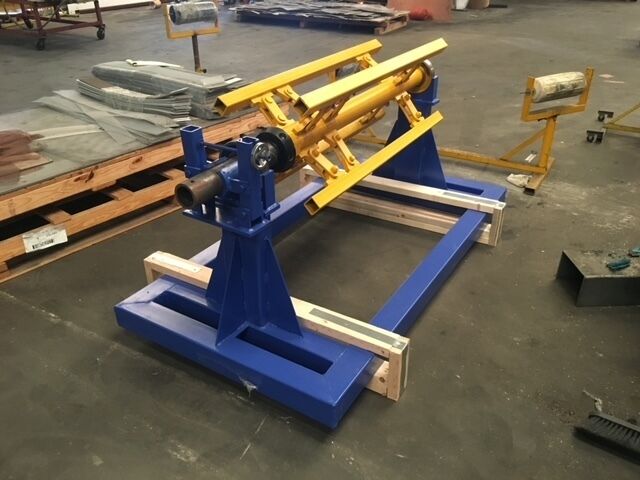Manual Uncoilers
Get a Quote
Send us a message and we’ll get back to you shortly.
Manual Uncoiler Description
Manual roll forming uncoilers, also known as manual decoilers or manual reel stands, are essential equipment in the roll forming process. They are used to hold and dispense coil or strip material, such as steel, aluminum, or other metals, to feed into a roll forming machine. Roll forming is a metal shaping process where a continuous strip of material is progressively bent and formed into the desired shape using a series of rolls.
Here are some key features and considerations for manual roll forming uncoilers:
- Purpose: Manual uncoilers are typically used for smaller-scale roll forming operations or when the budget and space do not allow for automated uncoiling systems. They are often used for producing custom or small-batch profiles.
- Load Capacity: The uncoiler should be designed to handle the weight and width of the coil material being used. The load capacity will depend on the specific application and materials being processed.
- Coil Size Compatibility: Make sure the uncoiler can accommodate the coil sizes you plan to use. This includes both the outer diameter (OD) and inner diameter (ID) of the coils.
- Manual Operation: As the name suggests, manual uncoilers are operated by hand. This means that an operator manually feeds and guides the coil material into the roll forming machine. Some manual uncoilers may have a hand-cranked or hand-wheel mechanism to help with material tension and alignment.
- Brake or Tension Control: Manual uncoilers may have a brake or tension control mechanism to regulate the speed at which the material is uncoiled. This helps prevent overfeeding and material jams.
- Portability: Depending on the design, some manual uncoilers may be portable or have wheels for easy relocation within a workshop or production area.
- Safety: Ensure that the uncoiler is equipped with safety features to protect operators from potential hazards, such as sharp edges or moving parts.
- Maintenance: Like any machinery, manual uncoilers require regular maintenance to ensure smooth operation. This includes lubrication of moving parts and inspections for wear and tear.
- Compatibility with Roll Forming Machine: The uncoiler should be compatible with the roll forming machine it feeds material into in terms of material thickness, width, and other specifications.
- Cost: Manual uncoilers are generally more affordable than automated or motorized uncoilers, making them a cost-effective option for smaller businesses or applications with lower production volumes.
It's important to choose the right manual roll forming uncoiler based on your specific production requirements and budget. Proper setup and operation of the uncoiler are crucial to the overall efficiency and quality of the roll forming process.


